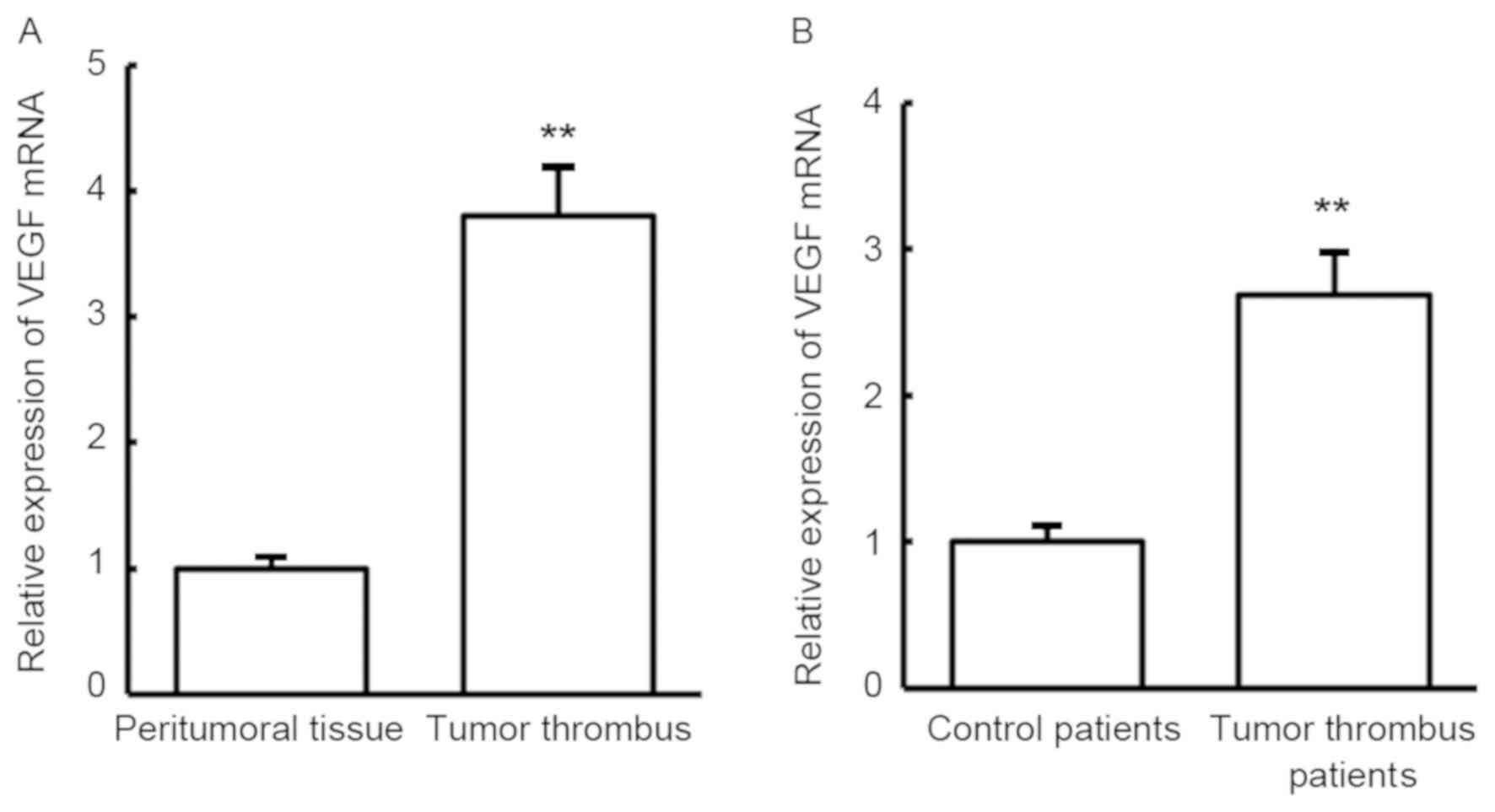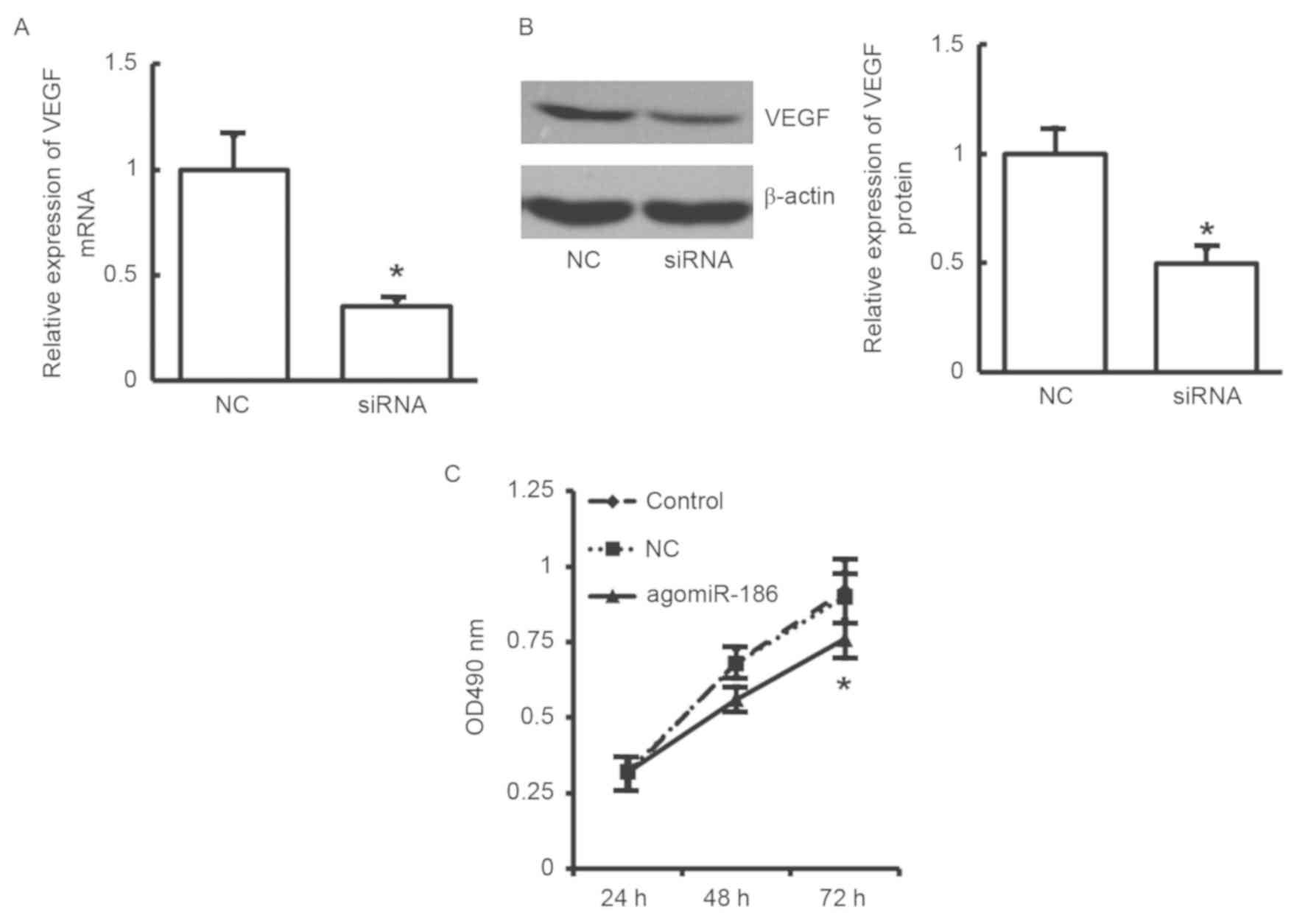|
1
|
Kanda M, Sugimoto H and Kodera Y: Genetic
and epigenetic aspects of initiation and progression of
hepatocellular carcinoma. World J Gastroenterol. 21:10584–10597.
2015.PubMed/NCBI View Article : Google Scholar
|
|
2
|
Kuszyk BS, Beauchamp NJ Jr and Fishman EK:
Neurovascular applications of CT angiography. Semin Ultrasound CT
MR. 19:394–404. 1998.PubMed/NCBI View Article : Google Scholar
|
|
3
|
Wedd JP, Nordstrom E, Nydam T, Durham J,
Zimmerman M, Johnson T, Thomas Purcell W and Biggins SW:
Hepatocellular carcinoma in patients listed for liver
transplantation: Current and future allocation policy and
management strategies for the individual patient. Liver Transpl.
21:1543–1552. 2015.PubMed/NCBI View
Article : Google Scholar
|
|
4
|
Yang BH, Xia JL, Huang LW, Tang ZY, Chen
MS, Li JQ, Liang AM, Mo QG, Lu HS, Dai CL, et al: Changes of
clinical aspect of primary liver cancer in China during the past 30
years-control study for 3,250 cases with primary liver cancer.
Zhonghua Yi Xue Za Zhi. 83:1053–1057. 2003.(In Chinese). PubMed/NCBI
|
|
5
|
El-Serag HB: Hepatocellular carcinoma. N
Engl J Med. 365:1118–1127. 2011.PubMed/NCBI View Article : Google Scholar
|
|
6
|
Trousseau A: Lectures on clinical
medicine, delivered at the Hotel-Dieu, Paris: Translated and edited
with notes and appendices, by P. Victor Bazire. Lindsay and
Blakiston, 1869.
|
|
7
|
Blom JW, Vanderschoot JP, Oostindiër MJ,
Osanto S, van der Meer FJ and Rosendaal FR: Incidence of venous
thrombosis in a large cohort of 66,329 cancer patients: Results of
a record linkage study. J Thromb Haemost. 4:529–535.
2006.PubMed/NCBI View Article : Google Scholar
|
|
8
|
Meyer G: Venous thromboembolism and
cancer. Rev Prat. 65:216–219. 2015.(In French).
|
|
9
|
Bianconi D, Schuler A, Pausz C,
Geroldinger A, Kaider A, Lenz HJ, Kornek G, Scheithauer W,
Zielinski CC, Pabinger I, et al: Integrin beta-3 genetic variants
and risk of venous thromboembolism in colorectal cancer patients.
Thromb Res. 136:865–869. 2015.PubMed/NCBI View Article : Google Scholar
|
|
10
|
Malaponte G, Signorelli SS, Bevelacqua V,
Polesel J, Taborelli M, Guarneri C, Fenga C, Umezawa K and Libra M:
Increased levels of NF-kB-dependent markers in cancer-associated
deep venous thrombosis. PLoS one. 10(e0132496)2015.PubMed/NCBI View Article : Google Scholar
|
|
11
|
Connolly GC, Phipps RP and Francis CW:
Platelets and cancer-associated thrombosis. Semin Oncol.
41:302–310. 2014.PubMed/NCBI View Article : Google Scholar
|
|
12
|
Chang LH, Pan SL, Lai CY, Tsai AC and Teng
CM: Activated PAR-2 regulates pancreatic cancer progression through
ILK/HIF-α-induced TGF-α expression and MEK/VEGF-A-mediated
angiogenesis. Am J Pathol. 183:566–575. 2013.PubMed/NCBI View Article : Google Scholar
|
|
13
|
Lee S and Goldfinger LE: RLIP76 regulates
HIF-1 activity, VEGF expression and secretion in tumor cells, and
secretome transactivation of endothelial cells. FASEB J.
28:4158–4168. 2014.PubMed/NCBI View Article : Google Scholar
|
|
14
|
Posch F, Thaler J, Zlabinger GJ,
Königsbrügge O, Koder S, Zielinski C, Pabinger I and Ay C: Soluble
Vascular Endothelial Growth Factor (sVEGF) and the risk of venous
thromboembolism in patients with cancer: Results from the Vienna
Cancer and Thrombosis Study (CATS). Clin Cancer Res. 22:200–206.
2016.PubMed/NCBI View Article : Google Scholar
|
|
15
|
Arutyunyan I, Fatkhudinov T, Kananykhina
E, Usman N, Elchaninov A, Makarov A, Bolshakova G, Goldshtein D and
Sukhikh G: Role of VEGF-A in angiogenesis promoted by umbilical
cord-derived mesenchymal stromal/stem cells: In vitro study. Stem
Cell Res Ther. 7(46)2016.PubMed/NCBI View Article : Google Scholar
|
|
16
|
Gapizov SS, Petrovskaya LE, Shingarova LN,
Svirschevskaya EV, Dolgikh DA and Kirpichnikov MP: The effect of
TNF and VEGF on the properties of Ea.hy926 endothelial cells in a
model of multi-cellular spheroids. Acta Naturae. 10:34–42.
2018.PubMed/NCBI
|
|
17
|
Wei Y, Yang Q, Zhang Y, Zhao T, Liu X,
Zhong J, Ma J, Chen Y, Zhao C and Li J: Plumbagin restrains
hepatocellular carcinoma angiogenesis by suppressing the migration
and invasion of tumor-derived vascular endothelial cells.
Oncotarget. 8:15230–15241. 2017.PubMed/NCBI View Article : Google Scholar
|
|
18
|
Ladizinski B and Federman DG: Trousseau
syndrome. CMAJ. 185(1063)2013.PubMed/NCBI View Article : Google Scholar
|
|
19
|
Livak KJ and Schmittgen TD: Analysis of
relative gene expression data using real-time quantitative PCR and
the 2(-Delta Delta C(T)) method. Methods. 25:402–408.
2001.PubMed/NCBI View Article : Google Scholar
|
|
20
|
Rehmsmeier M, Steffen P, Hochsmann M and
Giegerich R: Fast and effective prediction of microRNA/target
duplexes. RNA. 10:1507–1517. 2004.PubMed/NCBI View Article : Google Scholar
|
|
21
|
Witkos TM, Koscianska E and Krzyzosiak WJ:
Practical aspects of microRNA target prediction. Curr Mol Med.
11:93–109. 2011.PubMed/NCBI View Article : Google Scholar
|
|
22
|
Peterson SM, Thompson JA, Ufkin ML,
Sathyanarayana P, Liaw L and Congdon CB: Common features of
microRNA target prediction tools. Front Genet. 5(23)2014.PubMed/NCBI View Article : Google Scholar
|
|
23
|
Li J, Xia L, Zhou Z, Zuo Z, Xu C, Song H
and Cai J: MiR-186-5p upregulation inhibits proliferation,
metastasis and epithelial-to-mesenchymal transition of colorectal
cancer cell by targeting ZEB1. Arch Biochem Biophys. 640:53–60.
2018.PubMed/NCBI View Article : Google Scholar
|
|
24
|
Su BB, Zhou SW, Gan CB and Zhang XN:
MiR-186 inhibits cell proliferation and invasion in human cutaneous
malignant melanoma. J Cancer Res Ther. 14 (Suppl):S60–S64.
2018.PubMed/NCBI View Article : Google Scholar
|
|
25
|
Thodiyil PA and Kakkar AK: Variation in
relative risk of venous thromboembolism in different cancers.
Thromb Haemost. 87:1076–1077. 2002.PubMed/NCBI
|
|
26
|
Lambert EH, Pierorazio PM, Shabsigh A,
Olsson CA, Benson MC and McKiernan JM: Prognostic risk
stratification and clinical outcomes in patients undergoing
surgical treatment for renal cell carcinoma with vascular tumor
thrombus. Urology. 69:1054–1058. 2007.PubMed/NCBI View Article : Google Scholar
|
|
27
|
Karnes RJ and Blute ML: Surgery insight:
Management of renal cell carcinoma with associated inferior vena
cava thrombus. Nat Clin Pract Urol. 5:329–339. 2008.PubMed/NCBI View Article : Google Scholar
|
|
28
|
Lam JS, Klatte T, Kim HL, Patard JJ, Breda
A, Zisman A, Pantuck AJ and Figlin RA: Prognostic factors and
selection for clinical studies of patients with kidney cancer. Crit
Rev Oncol Hematol. 65:235–262. 2008.PubMed/NCBI View Article : Google Scholar
|
|
29
|
Bex A, Van der Veldt AA, Blank C,
Meijerink MR, Boven E and Haanen JB: Progression of a caval vein
thrombus in two patients with primary renal cell carcinoma on
pretreatment with sunitinib. Acta Oncol. 49:520–523.
2010.PubMed/NCBI View Article : Google Scholar
|
|
30
|
Harshman LC, Srinivas S, Kamaya A and
Chung BI: Laparoscopic radical nephrectomy after shrinkage of a
caval tumor thrombus with sunitinib. Nat Rev Urol. 6:338–343.
2009.PubMed/NCBI View Article : Google Scholar
|
|
31
|
Karakiewicz PI, Suardi N, Jeldres C, Audet
P, Ghosn P, Patard JJ and Perrotte P: Neoadjuvant sutent induction
therapy may effectively down-stage renal cell carcinoma atrial
thrombi. Eur Urol. 53:845–848. 2008.PubMed/NCBI View Article : Google Scholar
|
|
32
|
Shuch B, Riggs SB, LaRochelle JC,
Kabbinavar FF, Avakian R, Pantuck AJ, Patard JJ and Belldegrun AS:
Neoadjuvant targeted therapy and advanced kidney cancer:
Observations and implications for a new treatment paradigm. BJU
Int. 102:692–696. 2008.PubMed/NCBI View Article : Google Scholar
|
|
33
|
Hakenberg OW: Comment on Di Silverio et
al: Neodajuvant therapy with sorafenib in advanced renal cell
carcinoma with vena cava extension submitted to radical
nephrectomy. Urol Int 2008. 80:451–453, Urol Int 80: 454;.
2008.PubMed/NCBI View Article : Google Scholar
|
|
34
|
Roberts E, Cossigny DA and Quan GM: The
role of vascular endothelial growth factor in metastatic prostate
cancer to the skeleton. Prostate Cancer.
2013(418340)2013.PubMed/NCBI View Article : Google Scholar
|
|
35
|
Yan JJ, Zhang YN, Liao JZ, Ke KP, Chang Y,
Li PY, Wang M, Lin JS and He XX: MiR-497 suppresses angiogenesis
and metastasis of hepatocellular carcinoma by inhibiting VEGFA and
AEG-1. Oncotarget. 6:29527–29542. 2015.PubMed/NCBI View Article : Google Scholar
|
|
36
|
Zhao X, Mohan R, Özcan S and Tang X:
MicroRNA-30d induces insulin transcription factor MafA and insulin
production by targeting mitogen-activated protein 4 kinase 4
(MAP4K4) in pancreatic beta-cells. J Biol Chem. 287:31155–31164.
2012.PubMed/NCBI View Article : Google Scholar
|
|
37
|
Lewis BP, Burge CB and Bartel DP:
Conserved seed pairing, often flanked by adenosines, indicates that
thousands of human genes are microRNA targets. Cell. 120:15–20.
2005.PubMed/NCBI View Article : Google Scholar
|
|
38
|
Chen K and Rajewsky N: The evolution of
gene regulation by transcription factors and microRNAs. Nat Rev
Genet. 8:93–103. 2007.PubMed/NCBI View
Article : Google Scholar
|
|
39
|
Zhang ZL, Bai ZH, Wang XB, Bai L, Miao F
and Pei HH: miR-186 and 326 predict the prognosis of pancreatic
ductal adenocarcinoma and affect the proliferation and migration of
cancer cells. PLoS One. 10(e0118814)2015.PubMed/NCBI View Article : Google Scholar
|
|
40
|
Lee YH, Kim SY and Bae YS: Upregulation of
miR-760 and miR-186 is associated with replicative senescence in
human lung fibroblast cells. Mol Cells. 37:620–627. 2014.PubMed/NCBI View Article : Google Scholar
|
|
41
|
Sun P, Hu JW, Xiong WJ and Mi J: miR-186
regulates glycolysis through Glut1 during the formation of
cancer-associated fibroblasts. Asian Pac J Cancer Prev.
15:4245–4250. 2014.PubMed/NCBI View Article : Google Scholar
|
|
42
|
Cui G, Cui M, Li Y, Liang Y, Li W, Guo H
and Zhao S: MiR-186 targets ROCK1 to suppress the growth and
metastasis of NSCLC cells. Tumour Biol. 35:8933–8937.
2014.PubMed/NCBI View Article : Google Scholar
|















